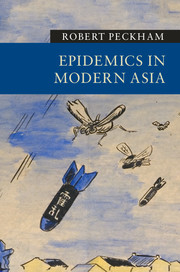3 - Environment
Published online by Cambridge University Press: 05 May 2016
Summary
Natural disasters, such as hurricanes and tsunamis, have long been viewed as the result of external biophysical forces acting upon human societies. They have been understood, in other words, as implacable natural processes beyond human control. More recently, particularly as a result of concerns about global climate change, there has been a shift of emphasis onto the anthropogenic causes of such adverse events. By destroying features of the environment, such as mangroves and wetlands, that provide protection from storm surges, humans are amplifying the effects of these extreme occurrences. While earlier histories tended to minimize the role of the social in natural disasters, more recent approaches have stressed the part played by human agency. Human history is increasingly viewed within an ecological framework. Expressed somewhat differently, we might say that the emphasis on human-made determinants of natural disasters reflects a deeper notion that people are ‘inescapably part of a larger ecosystem.’
Epidemics share many characteristics with natural disasters. They are the result of identifiable natural processes that lead to loss of human life and damage to property, infrastructure, and business; their impact may be mitigated by a population's preparedness; and above all, of course, they require susceptible populations. Disease outbreaks – or fear of them – are often a by-product of other species of disaster. The 2004 Indian Ocean earthquake and tsunami, which killed an estimated 280,000 people across South and Southeast Asia, with a million displaced into temporary camps, gave rise to concerns about epidemics of water-borne and food-borne infectious diseases, such as salmonellosis, typhoid fever, cholera, hepatitis, and shigellosis. By and large, these fears were not realized, but the specter of epidemics nonetheless shaped emergency responses to the tsunami. In this chapter, I probe the role of human agency in disease emergence and consider epidemics as episodes that foreground the convergence of human and natural ecologies. To what extent should epidemics be understood as the outcome of environmental crises? What countervailing effects have been produced by attempts to intervene with the environment to mitigate disease threats? How have evolving conceptions of disease shaped environmental change? And, finally, what role does politics play in determining human–environment relations?
As we saw in the previous chapter, cities have been important catalysts in Asia's environmental transformation, drawing in migrants to work in expanding industry.
- Type
- Chapter
- Information
- Epidemics in Modern Asia , pp. 142 - 192Publisher: Cambridge University PressPrint publication year: 2016

